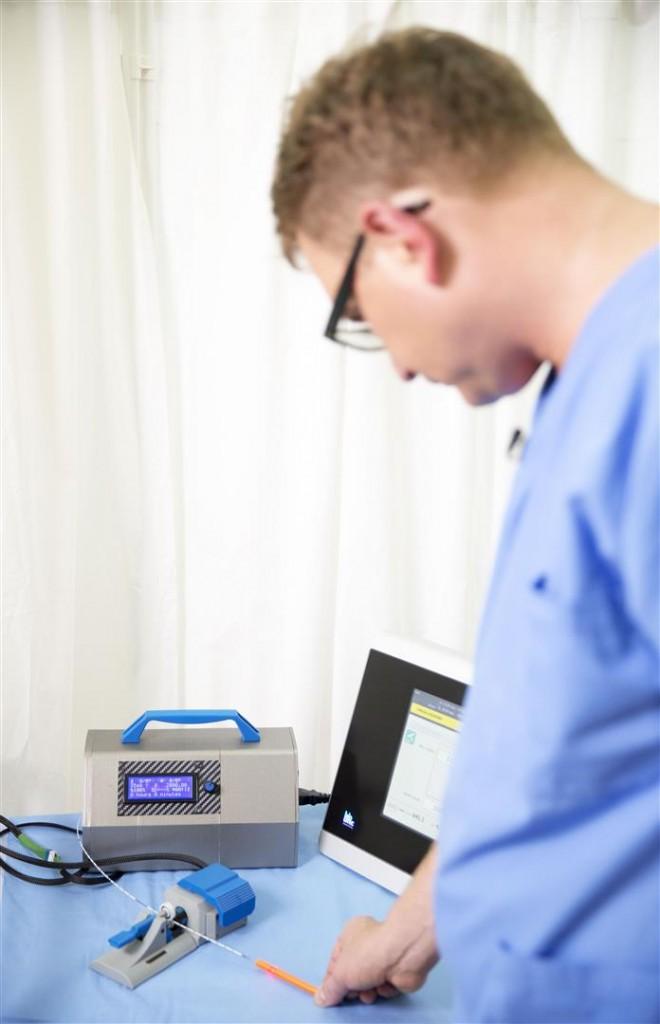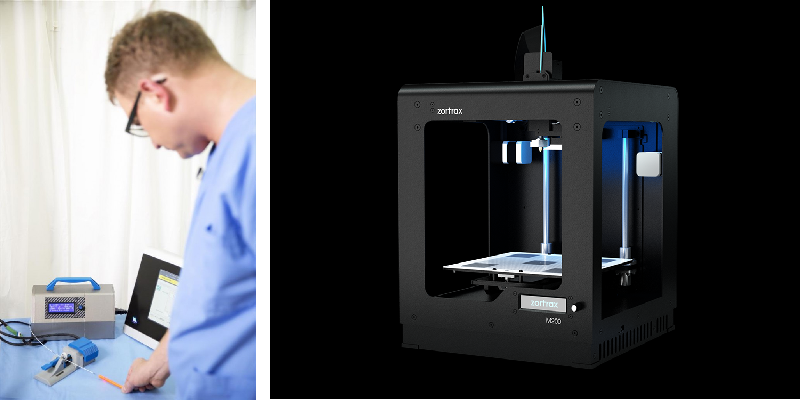
A somewhat unfortunately named machine, the Winch, more than makes up for those associations with the reduction in complications it delivers for this type of surgery. The Winch represents the first such device on the market and comes to us by way of the Polish 3D printing concern Zortrax. Engineer at Zortrax Robert Klaczyński worked with Dr. Marcin Feliga of the MEDIQ clinic to develop the machine, which has already been used in several test procedures in the Legionowo MEDIQ clinic, near Warsaw.
Despite advances in the procedure by which varicose veins are treated, the surgery is still one that requires a great deal of focus and skill. During the operation, an optic fiber laser is inserted into the veins and closes the vessels from the inside. This laser treatment requires absolute uniformity of movement by the optic fiber. If the fiber is removed too slowly or too rapidly from the vein, it can cause skin discoloration, skin irritation, or even burns.
“The human factor is unreliable. The process of closing the vein properly requires the right laser strength applied to the appropriate vein length. We’re tired, we perform a lot of operations, and there is a risk of removing the optic fiber too quickly or too slowly. The Winch operates much like a ski lift. It removes the optic fiber from the vein with the same speed and over the same time and makes 100% sure that it is closed properly. The
device has diametrically changed our operations, we have an almost 100% frequency of proper vein closing. Meanwhile, global statistics fall between 80 and 85%.”
A further advantage of the Winch is that it was created on the Zortrax M200 3D printer, a small desktop model. This means that rather than requiring industrial production scale, this device can be printed with a relatively small investment, especially true as 3D printers become more regular parts of every medical office’s equipment.
Let us know your thoughts on this sort of medical equipment in the 3D Printed Winch for Varicose Veins forum thread over at 3DPB.com.
